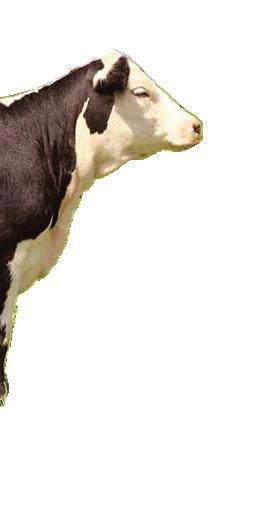
3 minute read
Have a little faith
Scientists predict mild harmful algal bloom for Lake Erie this year
By Sarah Donaldson sarah@farmanddairy.com
Advertisement
Lake Erie is expected to have a mild harmful algal bloom this year, according to researchers at Ohio Sea Grant’s 2023 virtual forecast for harmful algal blooms in Lake Erie, June 29. That’s likely due to a dry spring. Lake Erie’s harmful algal blooms are largely caused by nutrient runoff from farmland, specifically phosphorus. Less water, and therefore less nutrients, flowing into the lake will likely mean a milder bloom.
“It was the driest May since 1934, which was the dust bowl era,” said Laura Johnson, director of the National Center for Water Quality Research at Heidelberg University, during the forecast.
OKEANA, Ohio — Emily Mullen isn’t the type to wear jewelry, but she does wear one piece all the time. It’s a necklace with a mustard seed charm. She’s worn several over the years. Farm life is rough on jewelry.
Just like the mustard seed in the Bible that was said to grow into a tree so big that birds could perch in its branches, her once far-off dream to run her family’s dairy farm has grown, too.
Mullen, 24, took over operations of the family dairy farm from her father, Tim Mullen, and transformed it into a modern facility where they bottle their own milk and produce milk-based soaps and lotions. She recently moved her herd into a new free stall barn with a robotic milker and will soon move her creamery into the brand new space.
The journey hasn’t been an easy one, but it’s what she has been called to do, Emily said. When times have been hard, she remembers the mustard seed.
“This was the hardest thing I’ve done in my life, but I did it all because I love these cows,” she said. “This is what God wanted me to do. All you need is the faith of a mustard seed.”
Passion. Emily ran the first batch of chocolate milk through the creamery on Nov. 27, 2020. It was the culmination of years of work and planning.
Emily is the third of four sisters who grew up on the family farm in Butler County, Ohio. She says that growing up she was discouraged from pursuing farming as a career. Her father ran the family’s dairy farm on the aging farm, milking about 100 Holsteins. Emily said her father didn’t want her to have to work as hard as he did to make a living. He agrees.
“You’ve heard her speak. She could make a living speaking and work a whole lot less,” Tim said.
But in high school, she was one of the few students in her school who lived on a farm. She realized there was a huge gap in knowledge about food systems and agriculture between her and her peers. She began doing public speaking through her local FFA chapter, and her dream for the future of the family farm began to take shape.
“When you’re growing up on a farm, sometimes all you see is the hard work,” she said. “Instead of seeing myself as an outsider, I started seeing myself as an authority that needed to speak up.”
Starting new. Emily attended Ohio State University ATI and graduated in 2019 with an associate’s degree in dairy science. College was eye-opening for Emily. She knew she wanted to come home and open a creamery where they bottle milk on the farm.
“I could tell you a decent amount about cows, but I didn’t know the first thing about bottling milk,” she said.
While at school, she interned at Baker’s Golden Dairy, in New Waterford, Ohio, a Columbiana County dairy farm that bottles milk on-farm and makes other dairy products. By the time she got out of school and came
(Continued on Page A3)
This is the fourth consecutive year the National Oceanic and Atmospheric Administration has predicted a milder than average bloom. In 2021 and 2022, however, the bloom wound up being more severe than originally forecasted, leading researchers to believe that July rainfall is more significant than previously thought.
Forecast. The forecast for 2023 is a 3 on the severity index, with a potential range of 2-4.5. The severity index is a scale of 1-10, and anything over a 5 on the index is considered a more severe bloom. The size of the bloom doesn’t necessarily indicate how toxic it is.


In 2022, NOAA predicted an algal bloom with a severity of 3.5. The bloom in 2022 had a final severity of 6.8, according to a November 2022 release from NOAA.
There was a similar difference between the 2021 forecast — a severity of 3 — and the final bloom severity of that year — a 6.0 on the index.
“The blooms are developing in July,” explained Rick Stumpf, (Continued on Page A10)
Grand champion bred-and-owned female












